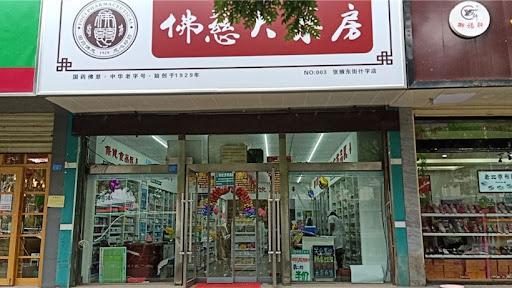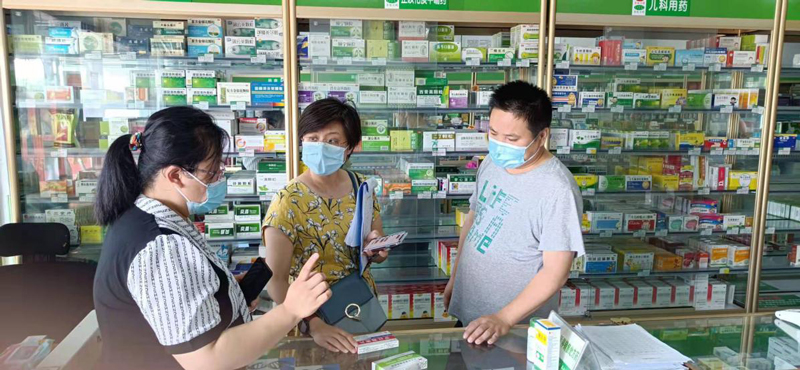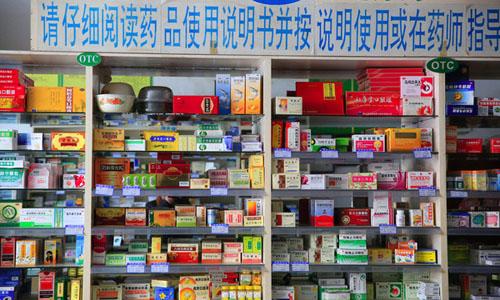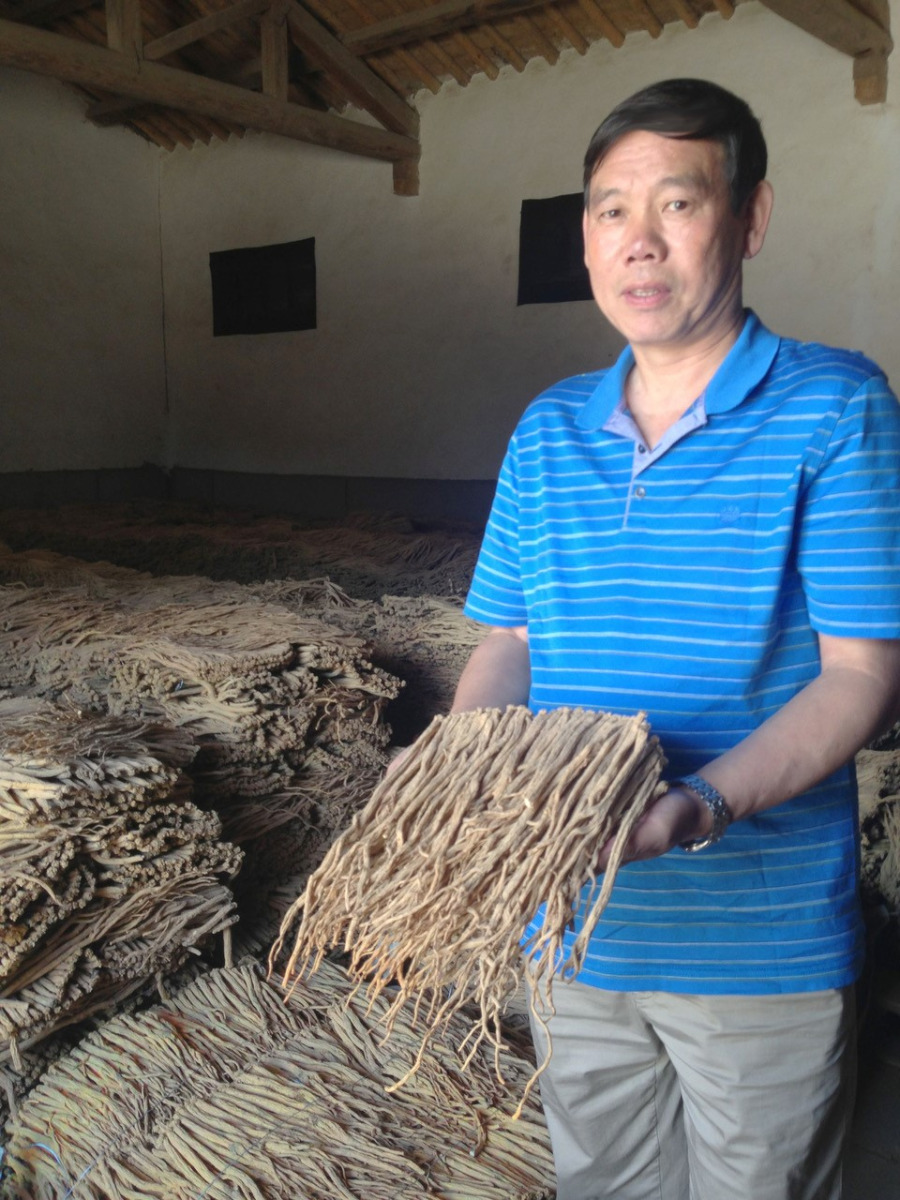Patent Medicines in China
A Conversation about Patent Medicines in China
with Han Jian Li & Yvonne Lau
Yvonne:
Over the 30+ years of my China travels, I have met quite a few TCM manufacturers. They invariably ask me about the U.S. market for TCM and are always curious about (and usually envious of) the ease with which TCM can be made and distributed here in America. The lack of product registration and safety requirements astounds our Chinese suppliers. This is in stark contrast to its highly regulated status in China, since drug products are dispensed by hospitals, clinics, and pharmacies only.
A significant portion of Mayway’s product line is zhong cheng yao 中成藥 (prepared/patent medicines). While it is advantageous that the lack of product registration requirements allows for a breadth of formulas and products to be readily available, the fact that they are not registered and regulated as medicine, as in other western countries such as Australia, Canada, and the U.K., may be to the disadvantage of the profession, since it denies access to some important herbs and formulas.
To gain a better understanding of the prepared/patent medicine situation in China, I had a series of conversations with Mr. Han Jian Li, our China Business Manager, who has worked in the TCM industry for nearly 40 years, and has extensive connections with manufacturers across China, as he has attended and exhibited at the biannual Canton Trade Fair, China’s largest multi-industry trade conference since the 1980s. Mr. Han and I have known each other since 1992, when I visited his factory for the first time.
YL:
What’s the general situation with patent medicines in China right now?HJL:
In recent years, the government introduced a series of measures to promote the development of the Chinese patent medicine industry. Patent medicines play an important role in the prevention and treatment of major acute diseases, especially infectious diseases. During the current pandemic, especially before vaccines were available, some proprietary formulas gained prominence. In March of 2020, the State Administration of Traditional Chinese Medicine (SATCM) stated that certain proprietary Chinese medicines have been vital in the successful treatment of Covid-19. Clinical results showed that Qingfei Baidu Decoction, Huashi Baidu Decoction, Xuanfei Baidu Granules, Jinhua Qinggan Granules, Lianhua Qingwen Capsules, Xuebijing Injection, etc. had obvious clinical efficacy with COVID-19.With the emergence of new diseases, President Xi then further encouraged and allocated funds for TCM research, which paved the way for manufacturers to develop and sell new products.
In 2020, while Covid related products, whether for prevention, treatment, or recovery have seen sharp sales increases, the sale of other medicines decreased. This is likely because less people visited hospitals and clinics due to caution and lockdowns, so those medicine sales were less than half of normal years, including sales of regular cold and flu medicines, because people were not being exposed. Since our country is still very serious about lockdowns and contact tracing for even a single case, I suspect that patent medicine sales will still be down this year.
YL:
How big is the industry?
HJL:
There are about 1,700 Chinese patent medicine manufacturers. In 2019, the Chinese patent medicine market was nearly 600 billion yuan (approximately US$92.7 billion). In the first three quarters of 2020, the overall drop in sales was 16%, but I suspect that percentage was buoyed by the sales of the Covid-related products.YL:
Wow, that’s still huge. How is so much medicine distributed?HJL:
Our country has near-universal health coverage through publicly funded basic medical insurance, so local health commissions organize public and private health care organizations to deliver services. Basic medical insurance plans cover primary, specialty, hospital, and mental health care, as well as prescription drugs and traditional Chinese medicine. For example, in 2019, the sales of proprietary Chinese medicines in public medical institutions such as urban public hospitals, county-level public hospitals, urban community health service centers, and township health centers totaled 283 billion yuan (US$43.7 billion) --nearly half the total annual sales of proprietary Chinese medicines.YL:
Do all hospitals in China dispense TCM treatments?HJL:
State-owned western medical hospitals all have TCM departments, providing TCM services. Hospitals such as Peking University Third Hospital in Beijing, Peking University People’s Hospital, Union Hospital, Cancer Hospital of Chinese Academy of Medical Sciences, Ruijin Hospital in Shanghai, Union Hospital in Wuhan, West China Hospital in Xi’an, Tianjin General Hospital in Tianjin, and Fujian Medical University Affiliated Xiehe Hospital are all well-known western medicine hospitals in China, and they all have Chinese medicine departments.YL:
How many TCM hospitals are there?HJL:
I don’t know the exact number, but every county is required to have at least one national Hospital of Traditional Chinese Medicine. As such, there are 1,884 national Chinese hospitals at county level, and together with the 293 prefectural-level national Chinese hospitals and 31 provincial-level national hospitals of traditional Chinese medicine (excluding Hong Kong, Macao, and Taiwan), there are at least 2,208 national hospitals of traditional Chinese medicine in the country.YL:
I know that hospital doctors often write custom herb prescriptions, but how do they choose which patent medicines to prescribe?
HJL:
Based on the diagnosis, the doctors choose formulas out of two drug catalogs. One is the "2020 Drug Catalog" issued by the National Medical Insurance Administration in December 2020 and implemented on March 1, 2021. There are 1315 kinds of Chinese patent medicines listed. The other is the "National Essential Medicines List", with 268 Chinese patent medicines, which has been in use since November 2018. These two drug catalogs serve all types of health institutions at all levels, and contain medicines for common diseases, chronic diseases, and serious diseases with heavy implications for public health.Of course, TCM being widely utilized, as well as big business here in China, the products in these two catalogs also provide production enterprises with conditions that are conducive to the expansion of sales. The "National Essential Medicines List", although with much fewer products, is the first choice for clinical use. This is because with the continued reform of our medical insurance program, from the perspective of ensuring supply and guiding clinical use of drugs, the essential drug list is more focused. In addition to clinical needs, it also considers public safety and health needs, and includes vaccines for immunization programs, anti-AIDS and tuberculosis drugs.
YL:
Amazing. Together, that’s almost 1600 patent medicines covered by insurance. But you also said that there are about 1700 TCM manufacturers. How does a product get into the system? Isn’t it really competitive?HJL:
Yes, which is why about 10 years ago our government conducted a major culling of product licenses. Depending upon the province, size and status of the manufacturer, number of similar or duplicate formulas being manufactured, and demand in the marketplace, the government cancelled many product registrations. (YL: In fact, this event caused us to have to find new manufacturers for some products and to discontinue others) I’ve heard that in some especially competitive provinces such as Guangdong, some manufacturers had their product licenses whittled by 90% or more. Since many older factories could have more than a hundred licenses, they might be left with 10-15 of only their top sellers. And without a product license, it would be illegal for any product to be manufactured and sold in the domestic market.The process to be listed in the current Drug Catalog or the National Essential Medicines List is rather opaque, and some algorithm involving the network of the national medical insurance authority, drug manufacturers, agents, retailers and patients is used to determine what should be included. I also suspect that personal connections are a big factor.
YL:
Then how do other TCM manufacturers survive and sell their products?HJL:
Because most TCM manufacturers lack exclusive products, there are dozens or even hundreds of manufacturers for a product, and the market competition is fierce. One sales channel that many Chinese patent medicine manufacturers participate in is bidding. A notice is issued by the procurement agency (for example, the health authority of a particular region), stating the name, specification, quantity and other conditions of medicines to be purchased, and inviting sellers (usually manufacturers) to bid for the order. This is a way for the successful bidder’s products to enter the main sales channel.Some manufacturers may adhere to the more traditional sales route, which means having satellite sales offices and personnel to serve local pharmacies, hospitals, and community clinics directly. Over time, this strategy seems to be less and less successful and the costs higher and higher. Provinces do tend to favor their own manufacturers, and can help protect those manufacturers with good loans, tax incentives, etc. to make it more difficult for outsiders to enter the market.
YL:
What about online sales? Can you buy patent medicines online?HJL:
Yes, but only from registered pharmacies, and a physical pharmacy is not automatically allowed to sell online. Pharmacies need to apply to their provincial drug regulatory authority. An "Internet Drug Information Service Qualification Certificate" is applied for first, then an "Internet Drug Transaction Qualification Certificate" three months later.Within these internet pharmacies, OTC medicines can be purchased online easily, such as Yin Qiao Jie Du Pian. Prescription TCM drugs however, require a medical consultation. For example, if I wanted "Angong Niuhuang Pill", besides the relevant product information being displayed, there are also "prescription drug online service instructions". The transaction flow is this: payment of order → supplementary consultation information within 24 hours → doctor's consultation and prescription & pharmacist prescription review → pharmacy delivery. There are also reminders: "After the prescription drug is paid, please fill in the user information immediately, and the system will refund if it is not filled in 24 hours." and "Please be sure to fill in the case information in detail and accurately so that the doctor can make an accurate diagnosis for you. If the information is vague or incomplete, your order may not be approved."
Yvonne:
It’s apparent that the online purchasing of OTC and prescription medicines has become very standardized, and especially in the current pandemic situation, offers a safe and convenient way for people to receive the medicines they need.Mr. Han and I agree that Covid-19 has severely challenged our countries and industry. It is interesting to note that our countries’ responses to the pandemic have created a “new normal” for both, but with marked differences in infection rates, lifestyle changes, and economic recovery. Both countries however, have experienced huge increases in online sales of health products, which may signal a permanent shift of patent medicine sales outlets.
For more about patent medicines, you can read our article on the History of Chinese Patent Medicine.
 Bio: Han Jian Li worked at the Chengde Jing Fu Kang Pharmaceutical Co. Ltd. for nearly 40 years until his retirement in 2014 as International Sales Manager. At the factory, Mr. Han worked in many different departments, from Production to Quality Control to Sales. Post retirement, Mr. Han joined Mayway as its China Business Manager, whereby he visits with manufacturers, attends tradeshows, advises on product development, and facilitates purchase orders. Mr. Han is also a classical Chinese scholar, and enjoys reading histories, writing poetry and practicing calligraphy in his leisure time.
Bio: Han Jian Li worked at the Chengde Jing Fu Kang Pharmaceutical Co. Ltd. for nearly 40 years until his retirement in 2014 as International Sales Manager. At the factory, Mr. Han worked in many different departments, from Production to Quality Control to Sales. Post retirement, Mr. Han joined Mayway as its China Business Manager, whereby he visits with manufacturers, attends tradeshows, advises on product development, and facilitates purchase orders. Mr. Han is also a classical Chinese scholar, and enjoys reading histories, writing poetry and practicing calligraphy in his leisure time.

